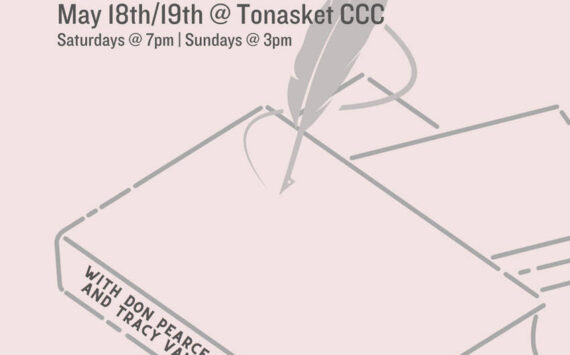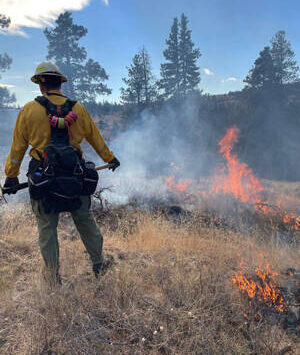TONASKET – Extending the school day is no longer optional, the elementary school is bursting at the seams with students, the alternative school is crumbling, the national award-winning FFA program has a lengthy waiting list and some of the athletic facilities are in dire need of a makeover.
Those are just some of the needs the Tonasket School Board discussed at its Monday, Oct. 28, meeting as it prepared to finalize details on both a maintenance and operations (M&O) levy, and either a capital levy or bond, to provide the funds to address those needs.
“Right now we have one more payment on the existing bond,” said Superintendent Paul Turner. “After this year that goes away… what we’d like to do is keep the total tax rate about the same.”
The needs covered by the M&O levy include the expansion of programming and staff that would be required as the school returns to full-length school day. The district has been running about 45 minutes short of a full day since the 1990s. And while the district has attempted to get back to the full day in the past – and started that process with some additional staff hired last year – that process now must be completed by fall of 2014.
“We need to reach 1,080 (hours of contact time per year) per Senate Bill 5919 by next fall,” Turner said. “In other words we have to get back to the normal day that we wanted to get to anyway. Now the state is telling us we have to.
“We need eight staff, which is $70,000 each including benefits… bottom line is $640,000. For and M&O levy we’d want to run $1.640 million, where $640,000 is getting the staff we need to get art, music and a counselor at the elementary, and to bring on staff at the middle and high school. We’ve talked about bringing on an ag science teacher to help out at the high school.”
Further discussion involved the need for capital funding, and whether or not a capital levy or a new bond would be preferable. A capital levy would only require a 50 percent vote to pass, while a bond requires 60 percent; however, access to the funding would be more gradual with the levy, requiring phased construction rather than taking on all the projects simultaneously.
“We can run a bond over 10 years to expand the value and keep the rate lower,” Turner said. “The capital levy can only go six years. It goes over time so we’d really have to prioritize which we would do first, second, etc.
“We’ve had some deeper discussion about having the bond. That’s one thing the board really needs to make a decision on…. It also allows us, if the bond passes, to start working on getting construction going on all the projects.”
The projected amount for the bond or capital levy ranged between $4-6 million, based upon an architect’s estimate of the projects. The facility needs include:
- * Classrooms at the elementary school. “We need to move the preschool,” Turner said. “Building a pod out the back for resource center rooms, will allow us to get our kindergarten and first grade all in the same pod. Right now we have a class in the 2-3 pod which causes a domino effect. And we’re looking strongly at the need to add a classroom by next fall because of our fourth and fifth grade numbers.”
- * Four or five classrooms added to the middle school, with an emphasis on space for STEM, although the need for flexibility for the future as curriculum needs change over time was emphasized;
- * A new Alternative School building, approximately 4,400 square feet. “Our alternative complex is falling down around our ears,” Turner said.
- * Expansion of the shop, which was built smaller than originally intended when the current facility was constructed. “We’ve looked at a three bay shop to reduce the overcrowding out there,” Turner said. “We need to take care of and enhance our shop programs.”
- * Bathrooms and a concession stand at the football field, as well as significant work needed at the baseball, softball and soccer complex. “We’ve talked about bleachers on the east side of the field and more parking,” Turner said. “But those are kind of set on the table until we deal with the other issues.”
Board member Ty Olson, a contractor, said that there likely won’t be a better time in terms of the market to take on a major project.
“It’s a competitive market right now,” he said. “I don’t see it tightening up more than it is right now. Now is the time for us, if we’re going to do this before things free up and that competitive nature of the industry goes away (which would drive up costs).”
There was also quite a bit of discussion over ensuring that the expanded facility would be able to accommodate the ever-shifting nature of curriculum and programming. Board chairman Jerry Asmussen noted that today’s kindergarteners, in many cases, will go into careers that don’t even exist yet.
“We need to serve the needs of all kids,” said board member Catherine Stangland. “Multiple pathways to prosperity …
“I’ve been pushing, pushing for college, you (the rest of the board) have been pushing, pushing for vocational. Now I feel like it’s switched. I still really believe in college, but I recognize that… I’ve got a college graduate, a valedictorian, who’s a barista right now. We’ve got to look at many, many options,” she added, listing a number that had been discussed. “Let’s build space that gives them those options.”
Budget update
One of the board’s other priorities in the coming years is to incrementally increase the district’s fund balance to approximately $900,000. At the end of the 2012-13 school year it was at $550,000, and dipped to about $110,000 ($42,000 in the district coffers and about $70,000 in reserve at the ESD).
“September was the month we were worked up about,” Turner said. “What I want you to look at is October and what we can expect. (Business Manger) Debbie Kitterman ran numbers on revenue versus expenditures for the month. Our revenues are coming in at $1.1 million and our expenditures are at $878,000. And that is coming to fruition with the numbers on the books right now.”
“I’m still having a heart attack here,” said board member Lloyd Caton. “Where it’s at right now is still pretty anemic.”
Enrollment was holding steady at 1,063 students in the district, well above the 1,030 anticipated for budgeting purposes.
The Tonasket School Board next meets in the District Office on Monday, Nov. 11, at 7 p.m.




